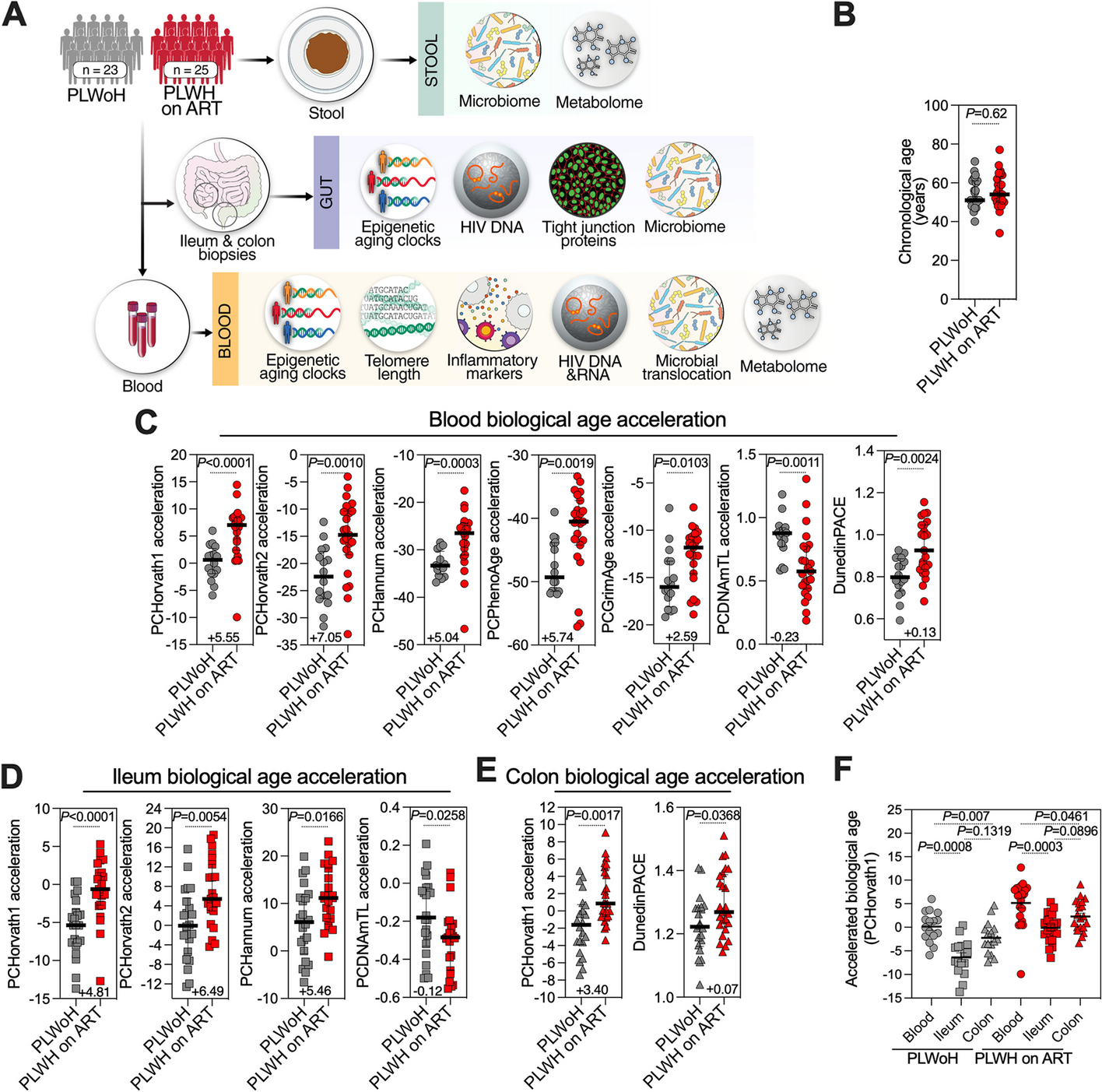4
Background People living with HIV (PLWH), even when viral replication is controlled through antiretroviral therapy (ART), experience persistent inflammation. This inflammation is partly attributed to intestinal microbial dysbiosis and translocation, which may lead to non-AIDS-related aging-associated comorbidities. The extent to which living with HIV — influenced by the infection itself, ART usage, sexual orientation, or other associated factors — affects the biological age of the intestines is unclear. Furthermore, the role of microbial dysbiosis and translocation in the biological aging of PLWH remains to be elucidated. To investigate these uncertainties, we used a systems biology approach, analyzing colon and ileal biopsies, blood samples, and stool specimens from PLWH on ART and people living without HIV (PLWoH) as controls. Results PLWH exhibit accelerated biological aging in the colon, ileum, and blood, as measured by various epigenetic aging clocks, compared to PLWoH. Investigating the relationship between microbial translocation and biological aging, PLWH had decreased levels of tight junction proteins in the intestines, along with increased microbial translocation. This intestinal permeability correlated with faster biological aging and increased inflammation. When investigating the relationship between microbial dysbiosis and biological aging, the intestines of PLWH had higher abundance of specific pro-inflammatory bacteria, such as Catenibacterium and Prevotella. These bacteria correlated with accelerated biological aging. Conversely, the intestines of PLWH had lower abundance of bacteria known for producing the anti-inflammatory short-chain fatty acids, such as Subdoligranulum and Erysipelotrichaceae, and these bacteria were associated with slower biological aging. Correlation networks revealed significant links between specific microbial genera in the colon and ileum (but not in feces), increased aging, a rise in pro-inflammatory microbe-related metabolites (e.g., those in the tryptophan metabolism pathway), and a decrease in anti-inflammatory metabolites like hippuric acid. Conclusions We identified specific microbial compositions and microbiota-related metabolic pathways that are intertwined with intestinal and systemic biological aging. This microbial signature of biological aging is likely reflecting various factors including the HIV infection itself, ART usage, sexual orientation, and other aspects associated with living with HIV. A deeper understanding of the mechanisms underlying these connections could offer potential strategies to mitigate accelerated aging and its associated health complications. Video Abstract
You must log in or # to comment.


